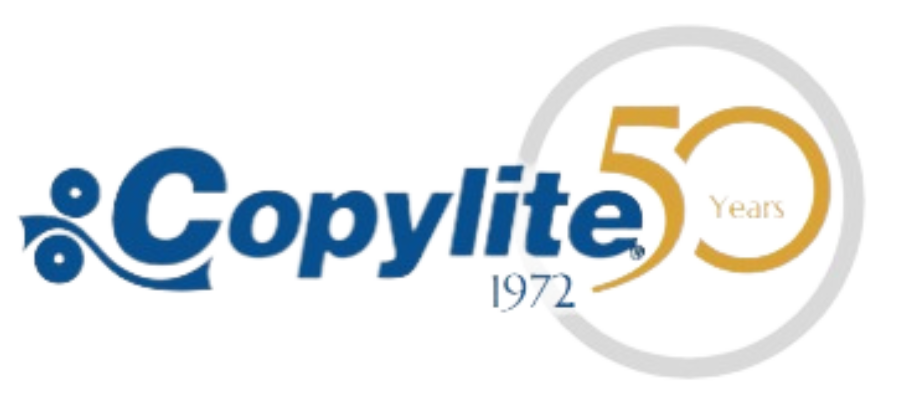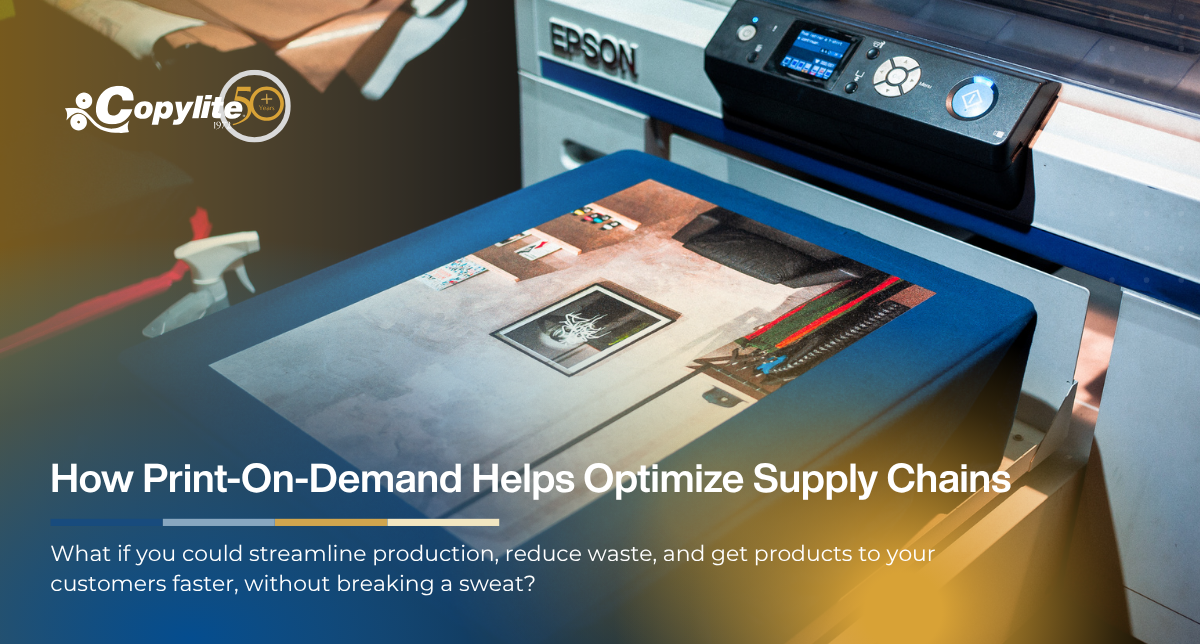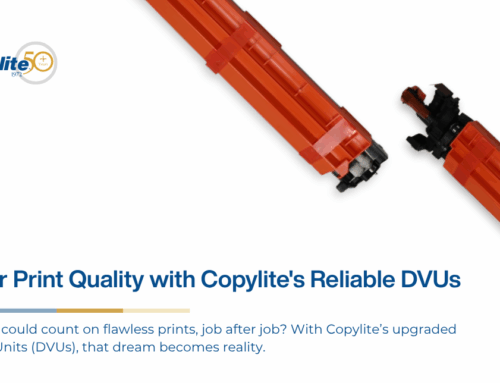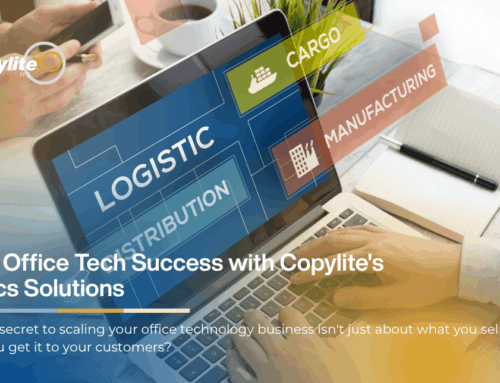Imagine this—you’re managing a business, juggling inventory, meeting customer demands, and trying to cut costs all at the same time. Sound familiar? Now imagine this instead. What if you could streamline production, reduce waste, and get products to your customers faster, without breaking a sweat? Welcome to the magic of print-on-demand (POD).
Print-on-demand isn’t just for Etsy sellers and custom T-shirt shops anymore. It’s transforming supply chains across industries. Whether you’re a CEO looking to trim operational fat or an IT professional aiming to introduce smarter solutions into your workflow, POD could be your secret weapon.
Is your curiosity piqued? Great—stick with me, and we’ll explore how print-on-demand works, why it’s a game-changer for supply chains, and how you can take advantage of it.
What Is Print-On-Demand?
Alright, first things first—what exactly is print-on-demand?
Print-on-demand is a production model where products are created only after a customer places an order. Think of it as “just-in-time” manufacturing meets digital printing. No more warehouses full of unsold stock, no more overestimating demand, and absolutely no more outdated inventory gathering dust.
Key features of print-on-demand include:
- Low Waste Production: Only produce what’s needed, minimizing waste.
- Customization-Friendly: Each product can be uniquely tailored to the customer.
- Swift On-Demand Turnaround: Orders can be fulfilled quickly with minimal lead times.
From apparel to marketing collateral, this flexible model is reshaping how businesses think about production and fulfillment.
Why Your Supply Chain Needs Print-On-Demand
Sure, print-on-demand sounds convenient, but how does it supercharge your supply chain? Strap in—here are the ways POD can streamline your business operations.
1. Slashes Storage Costs to Zero (Or Close to It)
Remember that giant storage space you’ve been using for inventory? With print-on-demand, you might not need it anymore. Since goods are produced on order, there’s minimal need for warehousing stock.
Imagine how many dollars you’ll save per square foot, not to mention the logistics involved in managing and tracking inventory. Those savings can go directly into growing your business or upgrading your IT infrastructure.
Pro Tip: Partner with POD vendors that also handle warehousing for essential items you still need in stock. Hybrid solutions are out there!
2. Boosts Flexibility and Scalability
Thinking of testing a new product or launching a limited-time offer? With print-on-demand, scalability and flexibility are no longer hurdles.
You can easily test concepts without the upfront investment or risk of overproduction. If the new product flops, no worries—you didn’t bulk-produce 10,000 units. If it’s a hit, you can rapidly scale your orders.
Quick Example: A small tech company tested branded merchandise through POD and scaled production by 300% after seeing initial demand soar.
3. Accelerates Time-to-Market
Speed is the name of the game in today’s competitive markets. How quickly can you move from concept to customer? With traditional supply chains, the process can span weeks or even months.
Print-on-demand flips the script by cutting production waiting times. Once an order is placed, the printing process begins immediately, ensuring products reach your customers faster.
4. Reduces Environmental Impact
Now here’s a win-win—staying eco-friendly and impressing your socially conscious clients.
- Lower Waste: POD eliminates the need for overproduction.
- Reduced Carbon Footprint: Local printing options can minimize shipping distances.
- Sustainable Materials: Many POD providers offer eco-friendly ink and recycled materials.
Add this green stamp to your brand, and you’ll attract like-minded customers who value sustainability (and probably have bigger budgets, too).
Who Can Benefit Most From Print-On-Demand?
You might be thinking, Is this really for me? (Spoiler alert: yes, it is). Here’s a breakdown of professions and industries where print-on-demand excels.
- Retail & E-Commerce: Say goodbye to dead stock and hello to endless customization options.
- Marketing Teams: Create tailored promotional materials on the fly, from brochures to event swag.
- Publishing Houses: Offer personalized or limited-edition book runs without risking a warehouse full of unsold copies.
Does your business fall in one of these categories? If yes, keep reading—you’re in for a treat.
How to Incorporate Print-On-Demand Into Your Supply Chain
You’re on board with the potential of POD. The next logical question is…how do you get started? Fear not—I’ve got you covered with actionable tips.
Step 1. Choose the Right POD Platform
Not all POD solutions are created equal. Research platforms based on your business size and product needs. Key factors to consider include:
- Turnaround times
- Product variety (e.g., apparel, corporate collateral, packaging)
- Integration capabilities with e-commerce or ERP systems
Hot Tip: For IT professionals, prioritize platforms that offer robust API integrations. This will make it easier to sync your systems seamlessly.
Step 2. Audit Your Processes
Evaluate how POD will integrate into your current workflows. Do you want to go fully on-demand or adopt a hybrid model with partial traditional inventory?
Step 3. Negotiate Contracts with Vendors
Find reliable printing vendors that align with your standards. Discuss pricing structures, minimum order volumes, and quality expectations upfront.
Step 4. Train Teams on POD Workflows
Whether it’s your marketing team or fulfillment center, ensure everyone is aligned on how print-on-demand operates. Setting expectations avoids hiccups along the way.
Step 5. Monitor and Optimize
Like any well-oiled supply chain, POD thrives on constant tweaking. Track performance metrics like order accuracy, production speed, and customer satisfaction.
Challenges to Watch Out For
No model is perfect, and print-on-demand has its quirks. Here are a few challenges to stay ahead of the game.
- Higher Unit Costs: Because you’re not ordering in bulk, the cost per unit may be higher. Balance this by assessing overall savings (no warehousing costs, minimal waste).
- Dependency on Vendors: Poor vendor performance can impact turnaround times and quality. Build relationships with providers you can count on.
- Limited Product Options: While expanding rapidly, some POD providers may not yet support niche items your business needs.
Prepare for these hurdles, and you’ll be in a better position to leverage all the benefits POD offers.
The Future of Print-On-Demand
The beauty of print-on-demand is how adaptable it is to other emerging innovations. Expect to see it integrate even more with technologies like:
- AI and ML tools: For smart demand forecasting.
- Blockchain: For supply chain transparency.
- Zero-Waste Manufacturing: Taking eco-friendliness to the next level.
Final Thoughts: Is Print-On-Demand Right for You?
Print-on-demand isn’t a glossy silver bullet, but it’s a powerful tool to untangle many of the complexities in modern supply chains. Whether you’re aiming to reduce overhead or optimize efficiency, POD can support your objectives in meaningful ways.
Now’s the time to think about how this cutting-edge solution can help future-proof your business. Still on the fence? Here’s a challenge—try pilot-testing POD with a low-stakes product. At worst, you’ll learn what doesn’t work. At best? You just found your next competitive edge.
Your supply chain deserves it.






